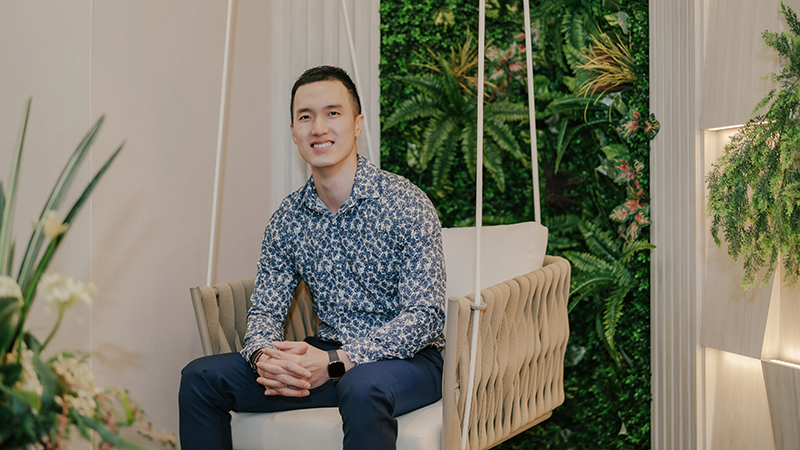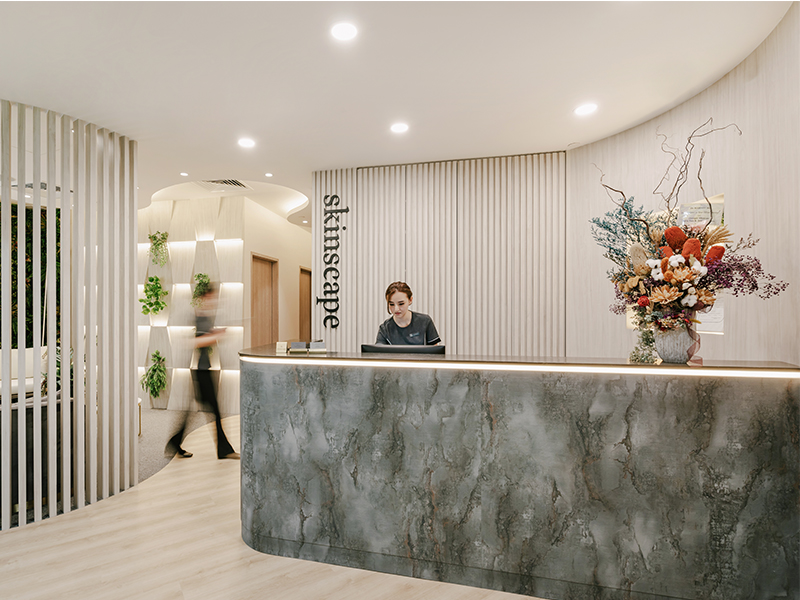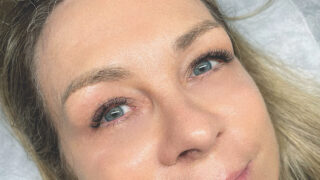We all have different thresholds of pain, and although I think I’m a toughie, there have been a few anti-ageing treatments in the past that have reminded me of childbirth! If you’ve been put off cosmetic treatments because of the pain, there are now a few ways to reduce it through numbing creams for Botox and other pain relief options.
We talk to DR HARVEY HO, Founder of Skinscape Clinic, about how he manages his patients’ pain through different procedures, from Botox to microneedling.
What are the aesthetic treatments that people would be wise to get numbing creams or pain relief for?
As patients vary widely in how they perceive the sensation of pain and their prior experience with aesthetic procedures, I take the time to really understand their concerns about pain, then provide them with the appropriate pain-relief strategy. Take for example, Botox; patients who routinely get Botox done typically only require the treated area to be numbed with ice, whereas some patients who have a fear of needles may require oral medication to stay calm.
In my practice, the objective of pain control is to reduce the pain felt during treatments as well as to minimise the fear of pain. I place great emphasis on managing my patients’ discomfort (both physical and psychological) during treatment as that allows me to really concentrate on getting the best results, instead of having to simultaneously allay their anxiety.
It is probably wise to opt for some form of pain relief for most medical aesthetic treatments so that you have a more comfortable experience. Even a simple vibrating device held against the skin works by blocking your nerve fibres from registering pain.
What options do you recommend for different treatments?
Topical numbing cream is routinely applied before most treatments. Depending on the intensity of the treatment, numbing cream can be left on for up to one hour. During this time, I highly encourage my patients to spend it in a room in my clinic, which is specially designed to allow them to practice various mindfulness-based therapies, such as breath focus and meditation. These purposeful relaxation techniques have been shown to reduce stress hormones and blood pressure. They are a form of natural pain relief and support the pharmacological approach in managing pain.
Ice and a vibrating device are typically used during injectable treatments, such as Botox, fillers and Profhilo. For certain superficial skin treatments such as micro-needling with radiofrequency or skin resurfacing lasers, I utilise a skin-cooling system to protect the epidermis and reduce the sensation of pain. These are mild therapies and I usually work my way up from here.
Oral medication can be given prior to stronger treatments such HIFU, Ultherapy or subcision. Such medication includes paracetamol, NSAIDs and opioids for pain, and benzodiazepines to reduce anxiety. Certain oral medication, however, may not be suitable for patients with drug allergies.
For treatments involving sensitive areas such as lip fillers, I offer my patients the option of having a nerve block, which is the injection of local anaesthetic near specific nerves. Local anaesthesia is also used for the excision of moles and cysts, and for nose and face threads. This provides significant pain relief and many of my patients don’t even feel the needle or scalpel penetrating the skin!
Patients who are extremely sensitive to pain or those who are doing multiple invasive treatments together may, when appropriate, opt for intravenous sedation at the clinic. This is similar to that used for gastroscopes and I engage the assistance of a certified anaesthetist to perform the sedation and monitor the patient throughout.
Managing pain is about also managing expectations and starts when a patient walks into the clinic. A welcoming and relaxing atmosphere has been intentionally created in the clinic to dissipate anxiety. After discussing with my patients and getting to know their preferences, I will employ a combination the above pharmacological and holistic pain relief therapies to achieve a positive experience for them. As far as possible, I want my patients to look forward to spending time in my clinic.
The same treatment can feel more or less painful when performed by different practitioners. Why is that so?
Apart from differences in pain management protocols, every doctor has his or her own preferences in treatment techniques and choice of tools.
For example, when injecting fillers, the use of a cannula rather than a needle can reduce the discomfort significantly because it is less likely to puncture blood vessels and nerves. Another consideration would be the choice of depth when injecting a product. For example, Botox placed superficially is more painful when compared to Botox injected deep into the muscle.
An injector’s skill and handling of the needle also directly affects a patient’s treatment experience. An injector who is able to smoothly inject a precise amount of product and employ distraction techniques such as pinching the skin prior to puncturing the skin will decrease the discomfort felt by patients.
The next step
There are so many options available now for improving our skin condition; so have a chat to Skinscape Clinic about which treatments you’d like to try, or what might be best for your skin. Call 6612 7496 or WhatsApp 9436 8453, or email them at contact@skinscapeclinic.com.
#03-17/18, The Cathay, 2 Handy Road
skinscapeclinic.com
Is it time for a facial or a haircut?
Don't miss out on the latest events, news and
competitions by signing up to our newsletter!
By signing up, you'll receive our weekly newsletter and offers which you can update or unsubscribe to anytime.






